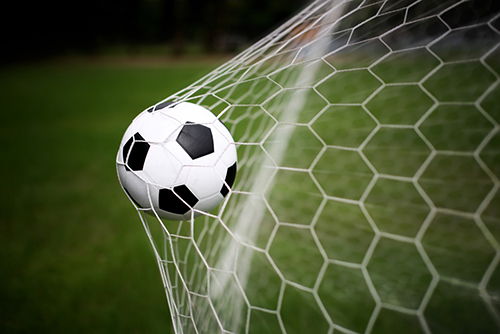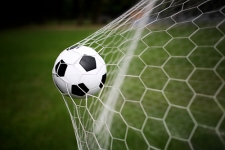
Warm-Up: Always, always, ALWAYS take the time to warm up and stretch prior to practice or competition. Cold muscles have a much higher incidence of sustaining injury. So, make sure to warm up with five minutes of jumping jacks, light jogging, or walking. Then, slowly and gently begin to stretch, with a bit of extra attention being given to hips, knees, calves, and thighs.
Hydrate: Did you know that even mild levels of dehydration can affect athletic performance (and not in a good way, either)? Yep, it’s true! If you haven’t adequately hydrated, your body will struggle to cool itself (via sweat and evaporation) at maximum capacity. When it comes to hydrating prior to and during practice and/or competition, a general rule of thumb is this: drink 24 ounces of non-caffeinated fluid 2 hours prior to exercise; then, drink an additional eight ounces of water (or sports drink) right before the start of the activity; and, finally, during exertion, do your best to consume eight ounces of water every 20 minutes.
Cool Down: Once a practice or competition is over, athletes have a tendency to rush on to another activity or task and, in turn, neglect the cool down process. Now, the “cool down” process doesn’t have to be long and involved, but it also shouldn’t be neglected. Stretching after a physical activity can help reduce muscle soreness and aids in keeping muscles long and flexible.
Maintenance: For many individuals (from youth to adult), spring sports tends to be a time when transition from an offseason where they may have been a bit more sedentary. Optimally, we like to see athletes in good physical condition prior to the start of their activity. This means that, during the off season, do your best to adhere to a fitness program that combines strength training, flexibility, and aerobic exercise. If, however, you find yourself at the beginning of a season a bit out of shape, make sure to gradually increase your activity level and slowly build your way back up to a higher level of fitness.
Hopefully the above tips will help you to stay healthy and injury free as you pursue your spring athletic endeavors. However, despite our best intentions, sometimes injuries do happen – if that’s the case, please know that those of us here at Prairie Orthopaedic and Plastic Surgery are here to help get you back in the game!
Source: aaos.org

